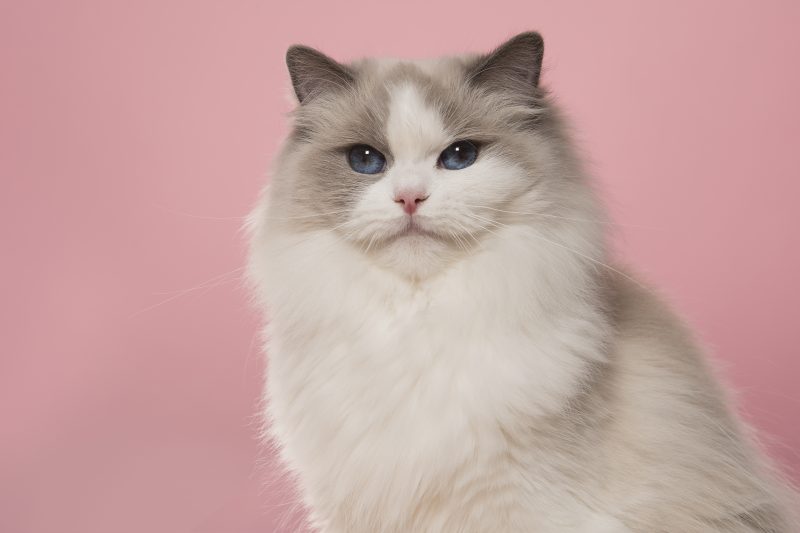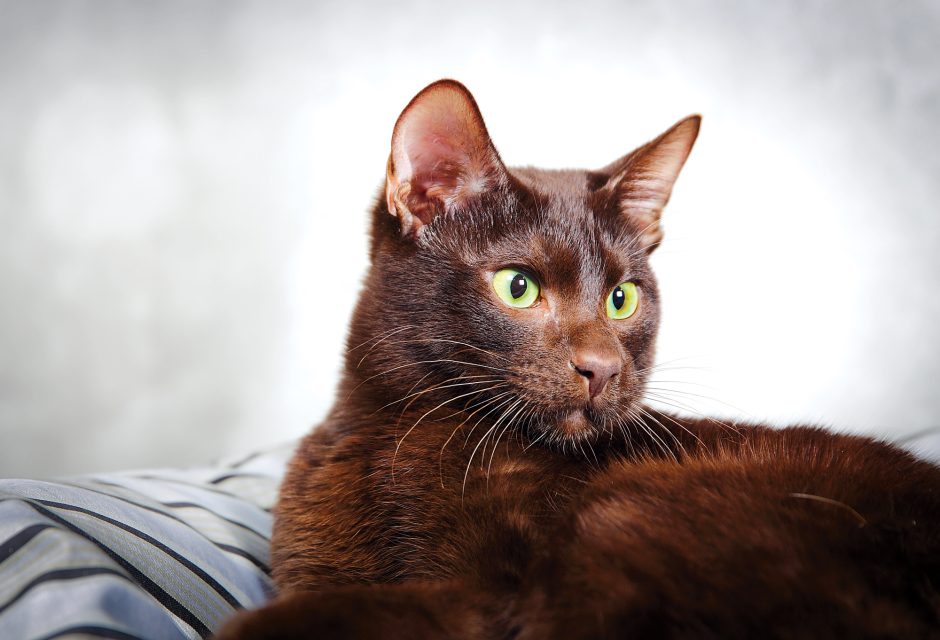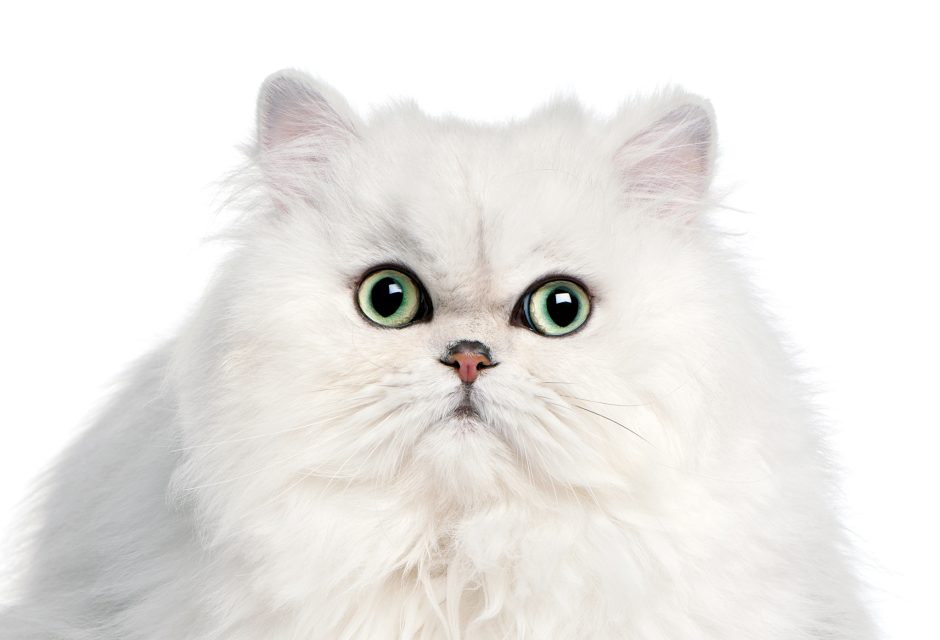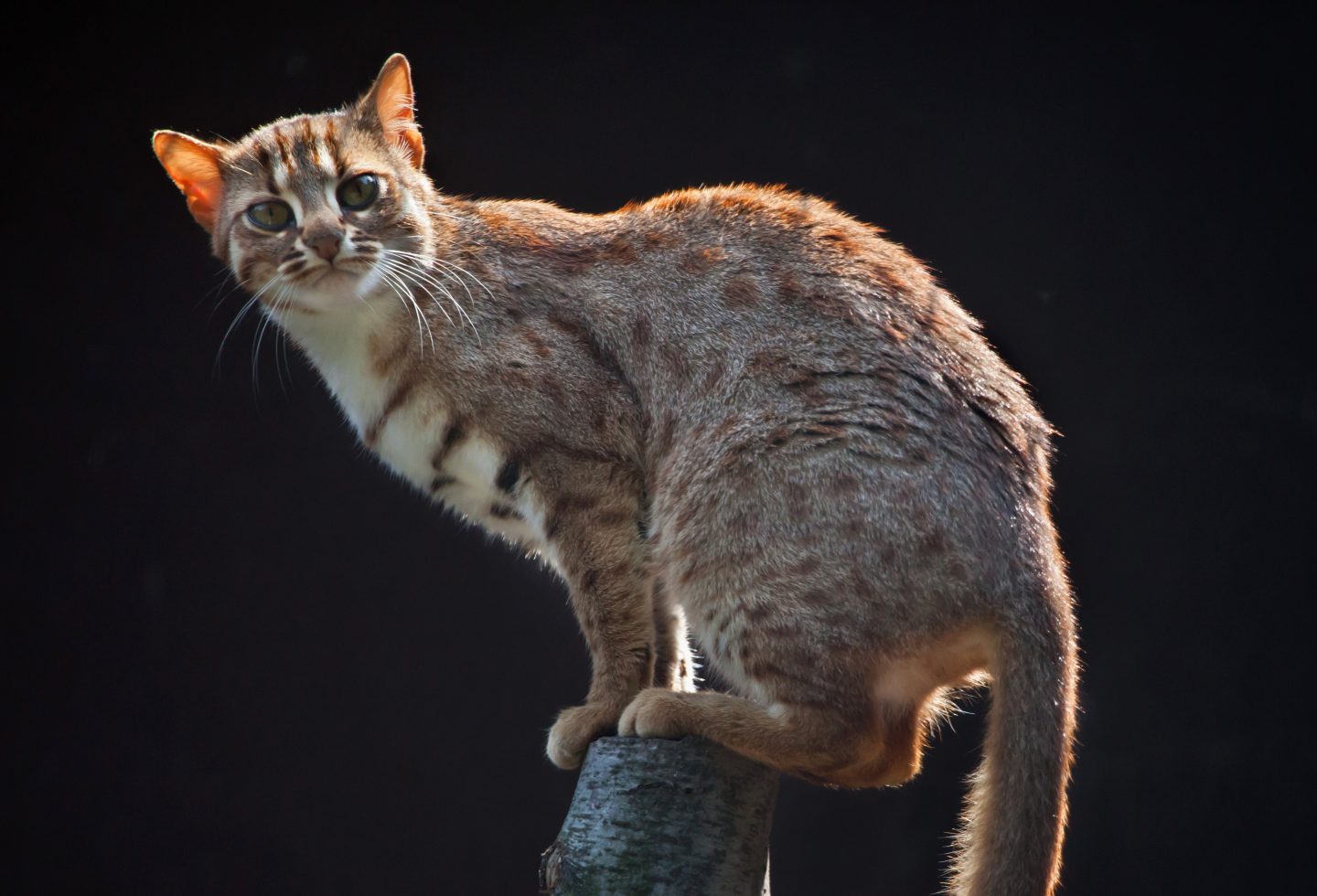
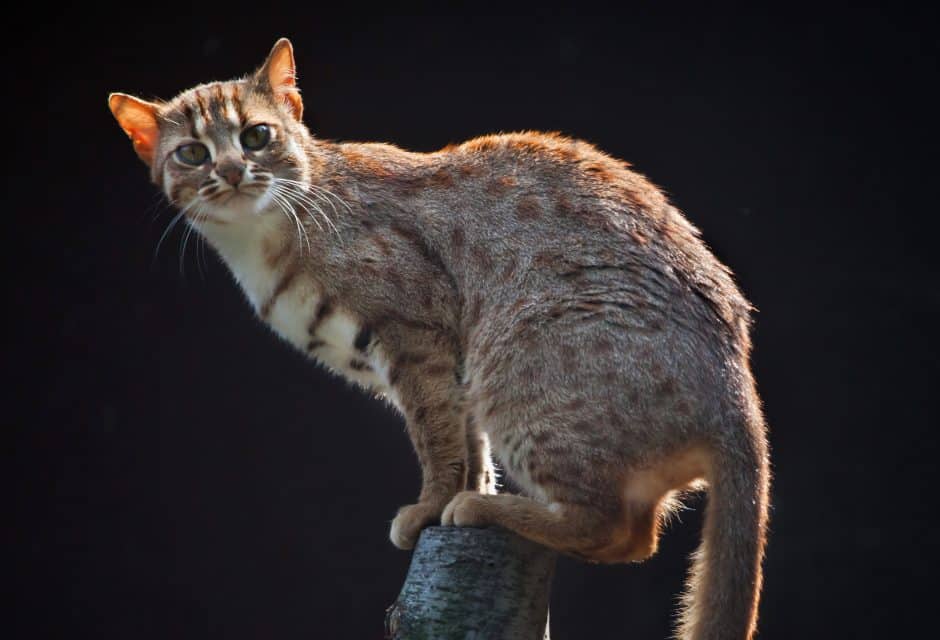
The Rusty Spotted Cat: Discovering the World’s Smallest Cat
Meet the world's smallest cat!
When thinking of wild cats, most people conjure visions of tigers and lions—big cats about 30 times larger than your typical tabby. Yet, amidst the wilderness of Sri Lanka and India, there’s a much smaller wild cat on the prowl—one that can fit in the palms of a human hand.
Introducing the Rusty Spotted Cat, the World’s smallest breed of feline, affectionately known as the hummingbird of the cat family. Be prepared be enchanted by this incredible creature!
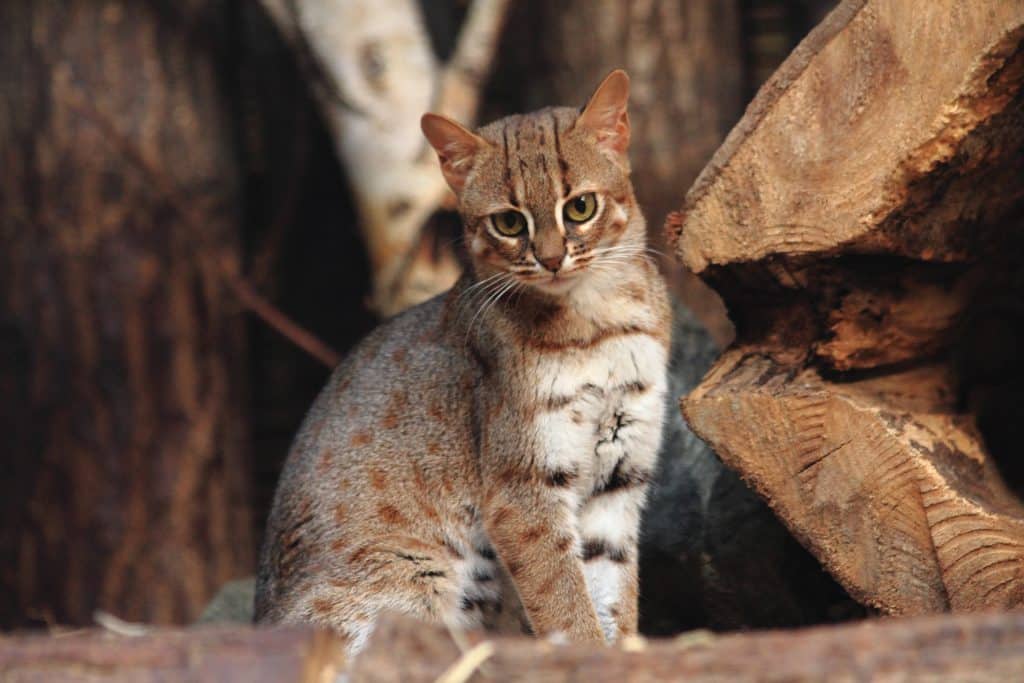
Photo Jirik V/Shuttterstock
Measuring Up: Size of the Rusty Spotted Cat
As adorable as they are tiny, the Rusty Spotted Cat weighs in at a miniscule two to four pounds, with a body length of just 12 to 20 inches. With these measurements, this breed is about half the size of a typical house cat but shares the fur pattern of one of its bigger relatives—the spotted leopard. The Rusty Spotted Cat has a grey-brown coat with red spots, appearing as a “washed out” version of its big cat relative. The leopard and the Rusty Spotted Cat also share a white under belly, dark streaks across their face and large, typically orange eyes.
The Rusty Spotted Cat: Tiny but Mighty
Although these cats are a fraction of the size of their relatives, they still pack a punch when it comes to hunting. Living off a diet of frogs, rodents, and domestic poultry, the Rusty Spotted Cat is known for being a fierce predator, often taking down animals that are triple their size. In fact, 19th Century zoologist and naturalist T.C. Jerdon kept a Rusty Spotted Cat as a pet, and observed its hunting behaviours first hand. In his studies, he recorded the wild cat seizing squirrels, along with animals much bigger than you’d expect. “When introduced to a young gazelle, the cat immediately seized it by the nape of the neck and had to be pulled off before it would let go,” Jerdon wrote in one of his reports.
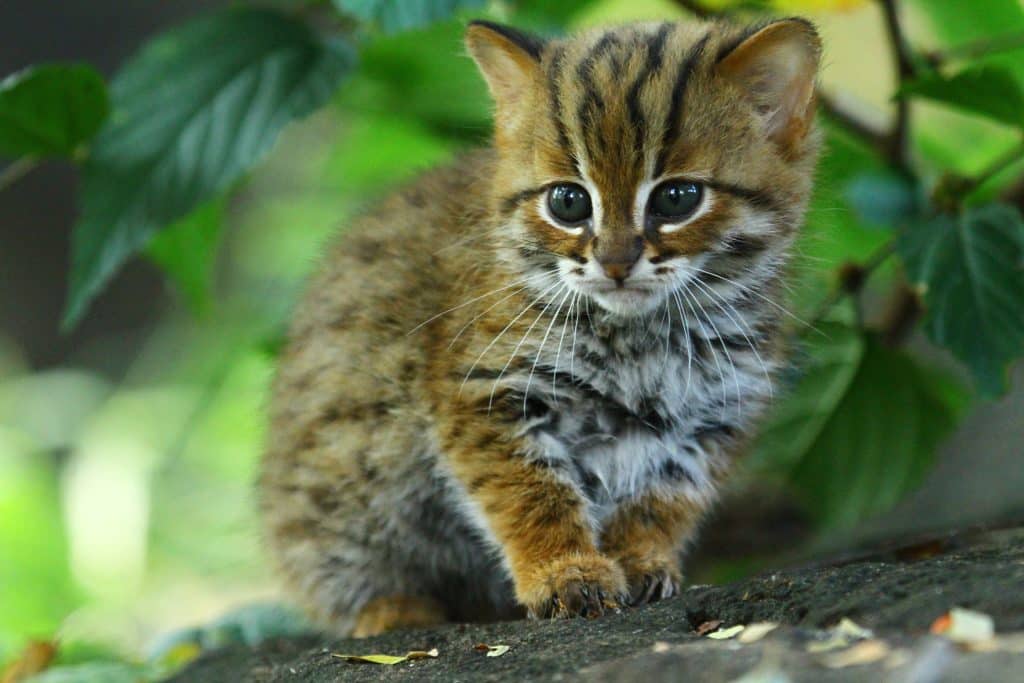
Photo nilantha/Adobe Stock
Wild Behaviour of the Rusty Spotted Cat
The shy nature of this rare feline means there is little in-depth knowledge of these elusive cats’ behaviour. However, limited studies from wildlife biologists have revealed the basic routine of the Rusty Spotted Cat.
As a primarily nocturnal animal, the “Hummingbird Cat” is known to begin hunting after the sun goes down. Under the cover of darkness, they hunt their prey, utilizing their agility and keen eyesight, which is six times more powerful than the human eye. They’re also very skilled “Chimpanzee-like” tree climbers, although most of their hunting is done close to the ground.
On Location: Where to Find the Rusty Spotted Cat
If you’re looking to spot one of these elusive creatures, you’ll only have luck in two locations—India and Sri Lanka. They can be found in caves, rain forests, rocky hill slopes, scrubland, and more. Recently, Rusty Spotted Cats have also been spotted in abandoned houses, miles away from their native habitats. It’s been inferred that they have been forced to relocate due to habitat destruction, and in doing so, found a food source—rats—in the houses.
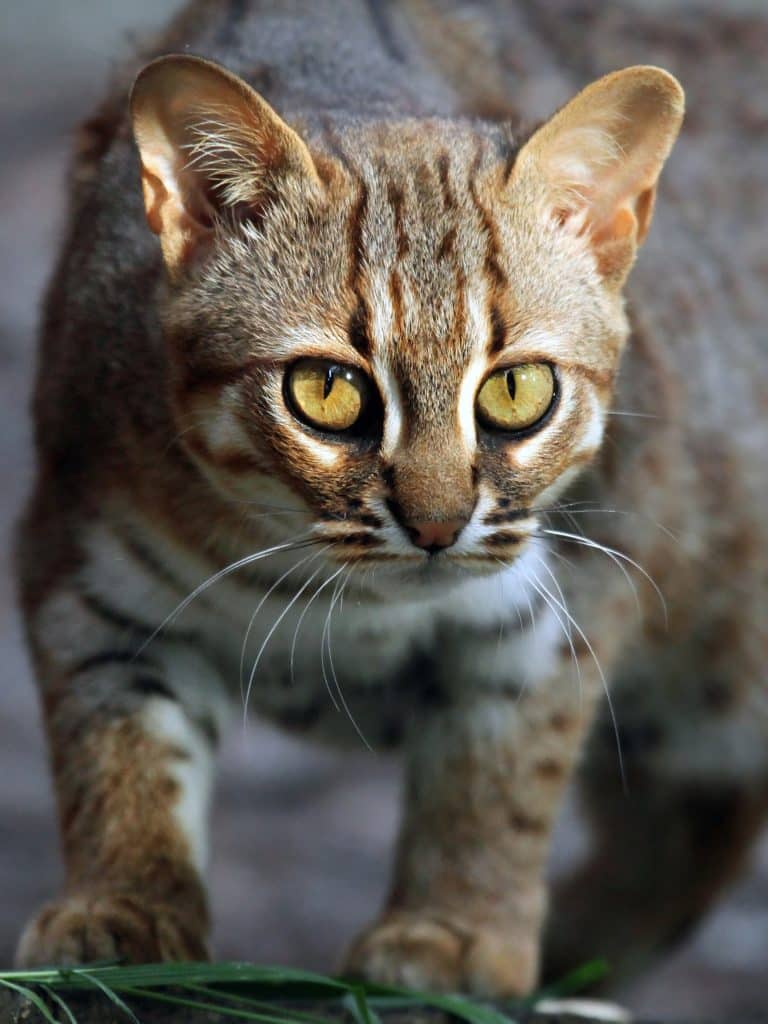
Photo Michal Sloviak/Shutterstock
Conservation of Rusty Spotted Cats
Back in 1834, the Rusty Spotted Cat was a rare find, but recent discoveries have shown they are more widespread than once believed. Despite this, their population is rapidly declining. Conservation efforts are under way to save the species. Though they are not officially endangered, they have earned a “Near Threatened” classification by the International Union for Conservation of Nature (IUCN). Habitat destruction, along with hunting from locals, has caused a decline in population that is inching towards a dangerous point.
Rusty Spotted Cats are a protected animal across their population range, with trading and hunting banned in India and Sri Lanka. Unfortunately, they are still targeted by poachers, usually when mistaken for a baby leopard. They are also huge targets in the illegal pet trade. Poachers often trap from wild populations, further endangering the world’s smallest cat breed.
Pet “Leopard”: Does the Rusty Spotted Cat Make a Good Pet?
With their petite size and those adorable, huge eyes, you could be forgiven for wondering if the Rusty Spotted Cat would make a good pet. Though they may be wildly cute, these are wild animals and should remain so. If you’re smitten by the Rusty Spotted Cat, consider the Bengal, the only spotted domestic cat breed with markings (called “rosettes”) similar to those found on leopards.
This article originally appeared in the award-winning Modern Cat magazine. Subscribe today!
Join the newsletter and never miss out on cat content again!
"*" indicates required fields
By clicking the arrow, you agree to our web Terms of Use and Privacy & Cookie Policy. Easy unsubscribe links are provided in every email.





